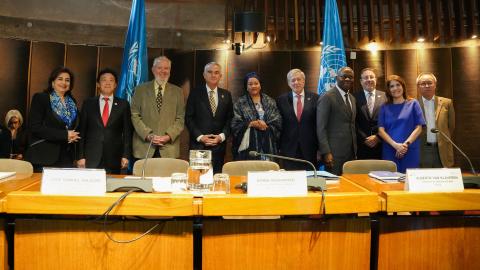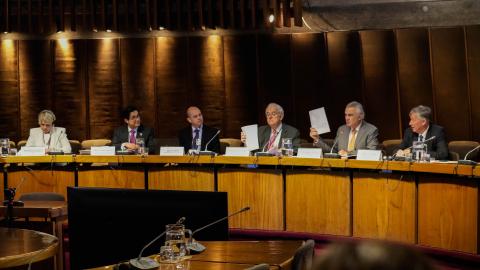Comunicado de prensa
Good afternoon
I will focus my remarks on two types of instruments which have the potential to catalyze further action to deliver on global environmental commitments: Debt swaps and thematic bonds.
Debt swaps for climate and nature are a financial instrument allowing countries to obtain debt forgiveness and reductions from external creditors in return for a commitment, on the part of the country, to invest in the protection of the environment, simultaneously addressing two major challenges to sustainable development: climate change and debt distress.
Thematic bonds are debt instruments which seek to exploit investors’ interest in supporting global priorities such as climate action and the SDGs, allowing issuers to access finance on better terms. They include sustainability bonds and sustainability-linked bonds (SLBs).
Sustainability bonds are “use-of-proceeds” bonds that aim to finance earmarked green or sustainable activities.
Sustainability-linked bonds (SLBs) tie the cost of borrowing to improvements from issuers on predefined sustainability indicators within a specific time frame.
Debt swaps for climate and nature were first used in the late 1980s and, after a hiatus, have since increased in scope and size since 2015.
In Costa Rica they were used to stop deforestation and finance forest recovery, the country went from 21% to 57% of the territory covered by forest from 1987 to 2023, after that a fuel tax sustained the program.
The recent debt for climate swaps by Belize in 2021 and Ecuador in 2023 are the largest deals on record.
Belize’s debt reduction amounted to USD 580 million dollars, equivalent to 37% of total debt, while Ecuador’s debt reduction was USD 1,628 million dollars, equivalent to 60% of total debt.
Despite some successful examples, the uptake of debt swaps has remained limited, partly due to high transaction costs.
In addition to transaction costs, debtor countries must overcome several challenges, including capacity gaps, reporting and monitoring requirements, and the difficulty in identifying potential transactions alongside finding creditors willing to engage in such swaps.
We know what to do, however, for example since 2021, our colleagues at the World Bank, the IDB, the African Economic Commision and others suggested: “Reducing transaction costs to issuers and investors by: bringing together counterparties to make investments; increasing standardisation; providing credible and authoritative nature and climate performance-linked data and assessment; and building out knowledge. This would support de-risking of investments across both the debtor and creditor communities.” (Finance for Biodiversity Initiative 2021)
The past two decades have seen increasing interest in thematic bonds. Since the first issue of sovereign green bonds in 2016, sovereign issuance of thematic bonds reached USD 80.8 billion in 2022. The sovereign Sustainability-Linked Bond (SLB) market is still at an infant stage, with Chile issuing the first SLB in March 2022.
In Latin America and the Caribbean, issuance of sovereign thematic bonds went from 6% of the total in 2019 to 50% of the total in 2023. However, their issuance remains highly concentrated, with Chile and Mexico representing almost 80% of cumulative sovereign bond issuance since 2019.
One of the main advantages of thematic bonds is that they carry lower yields than traditional bonds, thus lowering the cost of financing.
However, the difference in yields between thematic and conventional sovereign bonds are not on a scale that would make them a suitable instrument for countries that already have high debt levels and that face high spreads in global markets. Additionally, pre- and post-issuance costs associated with sustainable bonds can be sizeable for some countries.
With Thematic bonds we can finance basic needs like bringing electricity for all. For example in Latin America and the Caribbean still 18 million people has no access to electricity. They cook mainly with wood and our region still suffers a large 3 million hectares annual deforestation rate.
If we provide electricity to these isolated communities, it will require an investment of about $2 billion, it will reduce deforestation, respiratory diseases due to cooking, will diminish CO2 emissions therefore mitigating climate change.
As an additional dividend this investment would reduce the migratory forces for rural communities associated with the impossibility to feed and educate without electricity in the rural areas.
To scale up the use of thematic bonds donors could consider providing support to the development of localized standards and guidelines, or providing a grant element or a guarantee, essentially allowing them to furnish a form of budget support for SDG-linked investments.
Finally, it is important to stress that the purpose of the issuance of sustainability bond and Sustainability Linked Bonds (SLBs) should be well defined and integrated into a sovereign’s debt management strategy and issuance plans.


